You will need:
• water
• a glass cup or jar
• food colouring (blue or red work best)
• a piece of celery – this experiment works best if you use a short (3-inch/8 cm) piece that still has some leaves attached at the top.
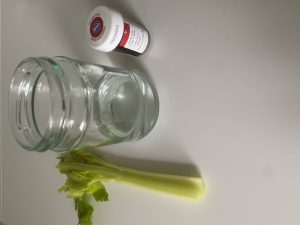
What to do:
1) Always ask an adult for help with your experiments!
2) Fill the jar partway with water and add the food dye (the more dye you add, the easier it will be to see).
3) Place the celery stick with the leaves at the top so that one end is submerged in the coloured water.
4) Watch how the dye travels up the stem of the celery to the leaves; check on it after the 1-2 hours and then anytime over the next 24 to 48 hours.
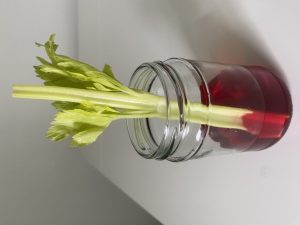
How the experiment works:
• Plants take up water with their roots and transport the water through the stem, to the leaves.
• The piece of celery is the stem of the plant, so it will take up water from the jar, bringing the dye with it.
• Hollow cells, called vascular tissue, transport water throughout the plant.
• These vascular cells have very strong cell walls, which help to transport water and also help plants stand upright.
Start
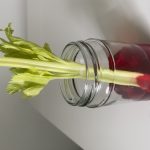
1 hour later
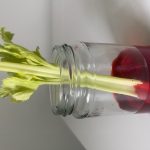
2 hours later
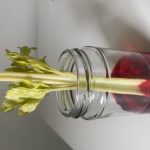
3 hours later

4 hours later

12 hours later
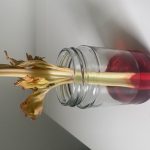
Bonus questions:
• What does the end of the celery that has been sitting in the dyed water look like? What does it look like if you peel back the layers of the celery? Do different parts of the celery have more or less dye than other parts of the plant?
• Do you think this might also work with the stems of other plants?
• What would happen if you added both blue and red dye to make purple water? Would both dyes move at the same speed?